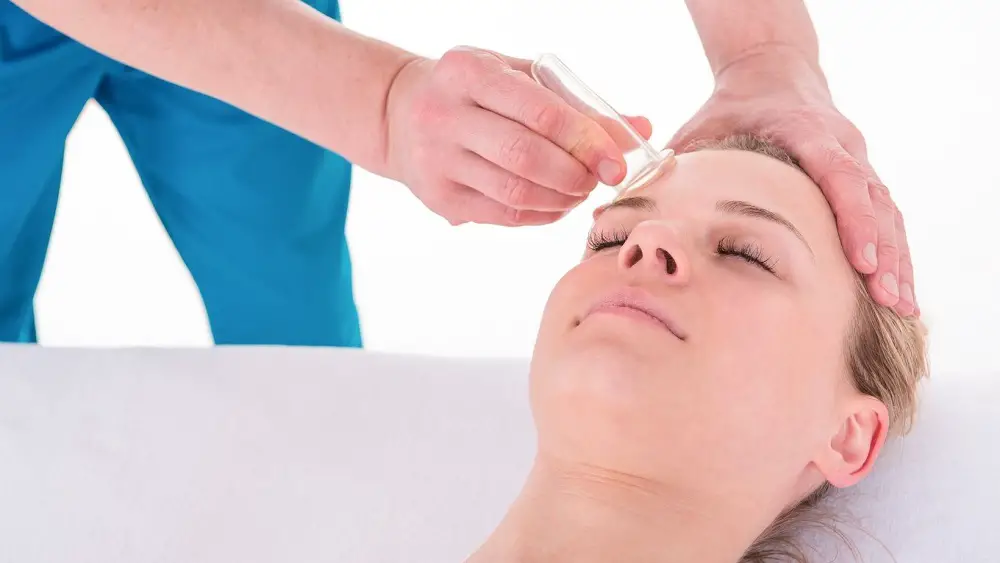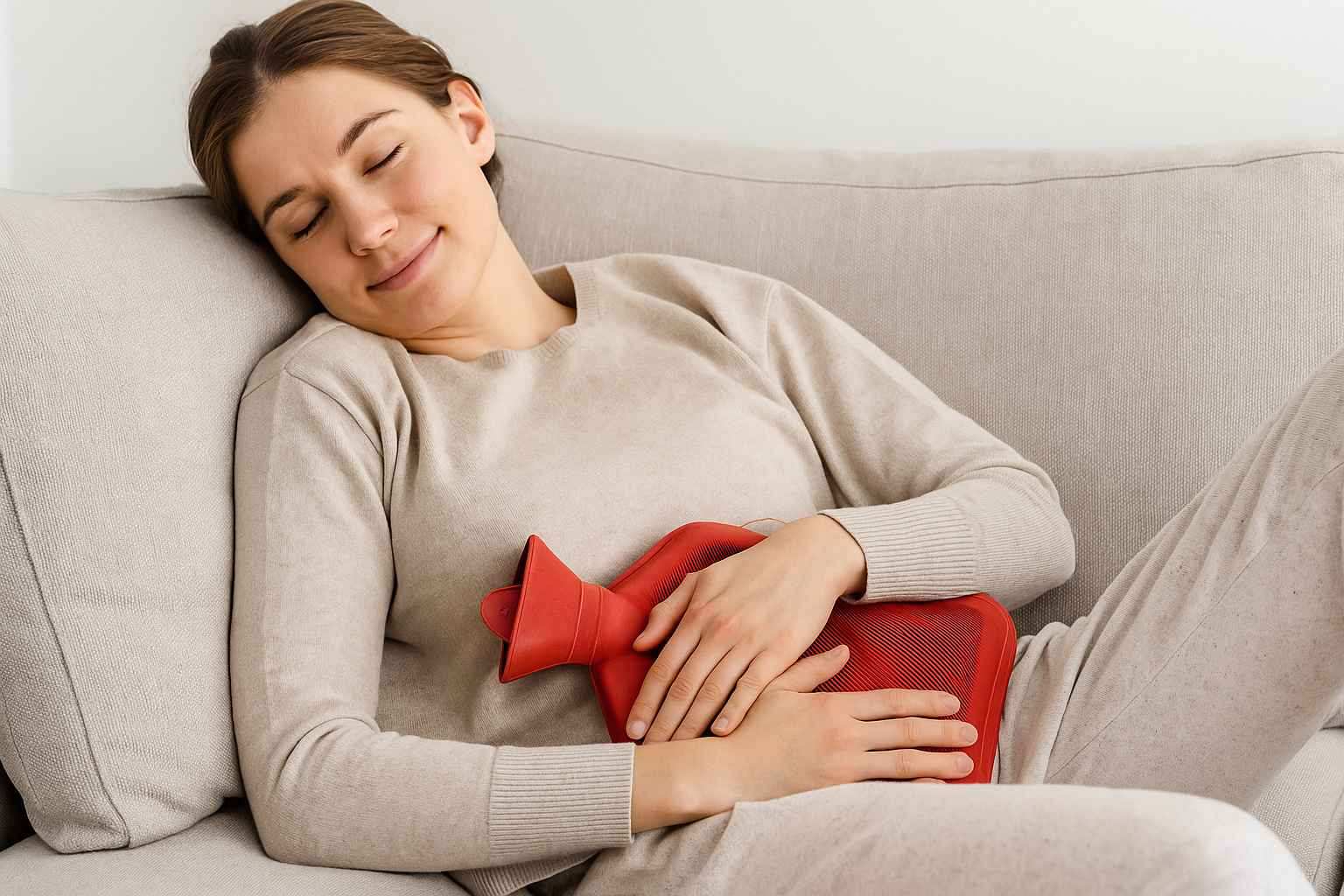Is there anything more stubborn than arm fat? Somehow that area of the body always seems to resist toning, even when the rest of our body is looking good. I struggled with saggy arms for quite some time, despite working out and eating healthy. Just when I was about to give up, I came across these acupressure points to reduce arm fat, and they were just what I needed!
Years of stubborn arm fat melted away and toned up when I added these effective acupressure points into my daily routine. I couldn’t be happier with the results, which is why I’m sharing my favorite acupressure points to reduce arm fat here!
Can Sagging Arms Be Toned?
Sagging arms can be toned. The traditional methods include a lot of exercises to fill the loose skin with muscle, but not everyone has the time or materials for rigorous workouts.
Acupressure points are commonly thought of as a way to reduce pain in the joints, and while they have been proven to do so, acupressure is also great for more superficial concerns. Acupressure increases energy flow to different parts of the body depending on which points are activated. This increased energy flow aids in adding elasticity to the skin, releasing stagnant energy, and enhances any additional efforts for toning, like exercise.
How Can I Slim My Arm Fat?
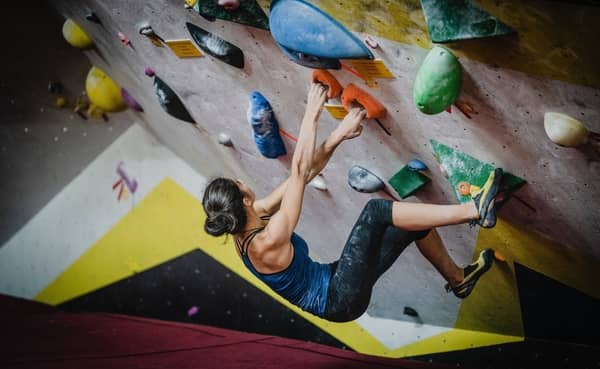
Acupressure techniques have been proven as an effective treatment to assist with weight loss in various areas of the body, including the arms. While it is generally recommended to use acupressure in conjunction with other efforts, like healthy eating and exercise, this technique can also be used alone.
As an added benefit, acupressure provides an option for arm fat slimming that is gentle on the joints and enhances mobility. After regular acupressure treatments, you may be able to engage in exercises that your arms could not previously handle, allowing you to make even more improvements in your arm health!
Acupressure Points For Arm Fat Loss
Acupoint: LI-14 (Other Names: Large Intestine-14/Bi Nao/Upper Arm)
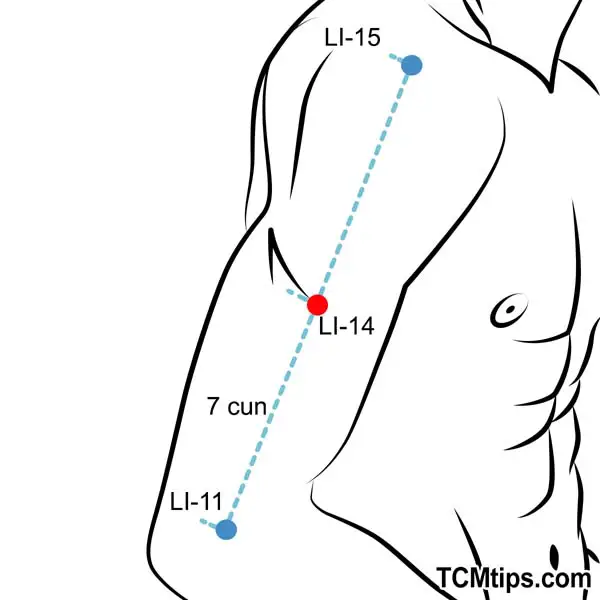
LI-14 is a point along the liver channel, and it is known for its ability to relieve pain in the shoulder. Most commonly, this pain is related to a build-up of lymph, which is a fluid in the body that remains stagnant unless the body is in motion. Activating this point encourages the movement of lymph, especially in the upper arms. As a result, build-ups of fluid that cause sagging arms can be relieved, and the arms will tone up.

This point is located on the bicep of the arm, about 8 finger-widths up (or 7 cun) from the elbow or down from the shoulder. It is towards the outer side of the arm, where you will feel the anterior deltoid from the shoulder meet the edge of the bicep. Apply pressure to this point for a few seconds at a time.
Acupoint: LI-10 (Other Names: Large Intestine-10/Shou San Li/Arm Three Miles)
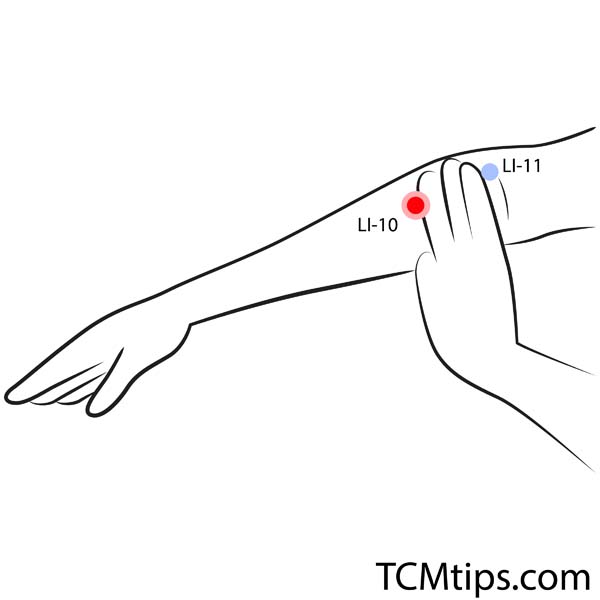
This liver channel point may be located on the forearm, but it works wonders on sagging upper arms. A favorite on the list of acupressure points for shoulder and arm pain, LI-10 aids in improving energy flow, which minimizes the amount of fluid and stagnant energy build-up in the upper arms. This point can serve dual purposes as it is known to also relieve paralysis of the upper extremities.
Turn your palm downward and slightly bend your arm. This point can be found three finger widths from the elbow crease towards the hand. It will be in line with the thumb, along the slightly boney length of the arm. Apply firm pressure to this area for 4 to 5 seconds, but be careful not to damage the skin.
Acupoint: SI-3 (Other Names: Small Intestine-3/Hou Xi/Back Stream)
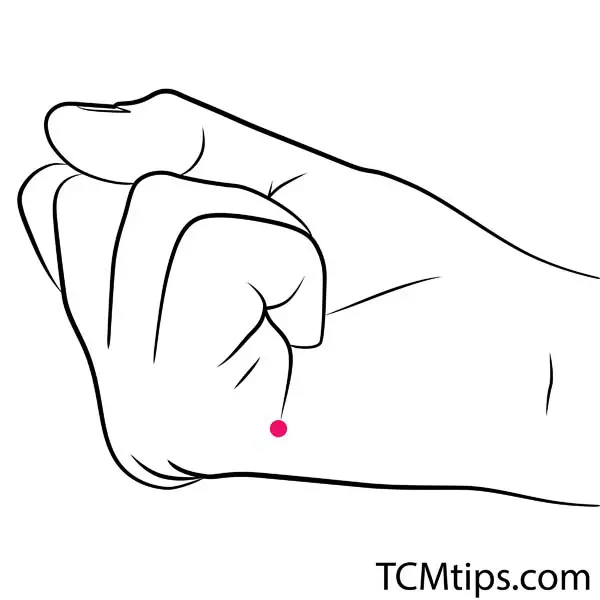
Surprisingly enough, this small intestine point in the hand can have a big impact on flabby arms. Many times this point is forgotten due to its odd placement, but it has many uses, including being one of a few acupressure points for emotional release. This point keeps the energy flowing in your upper body for some powerful and positive effects.
To find this point, start by making a fist with one hand, and rotate that fist so you can see the side with your pinky finger. There will be a crease that is created in the side of your palm nearest the pinky finger. You will know it is the correct crease as the skin will bulge at the end of the crease. That is exactly where you should apply pressure while you maintain a loose fist.
Acupoint: LI-11 (Other Names: Large Intestine-11/Qu Chi/Pool at the Crook)
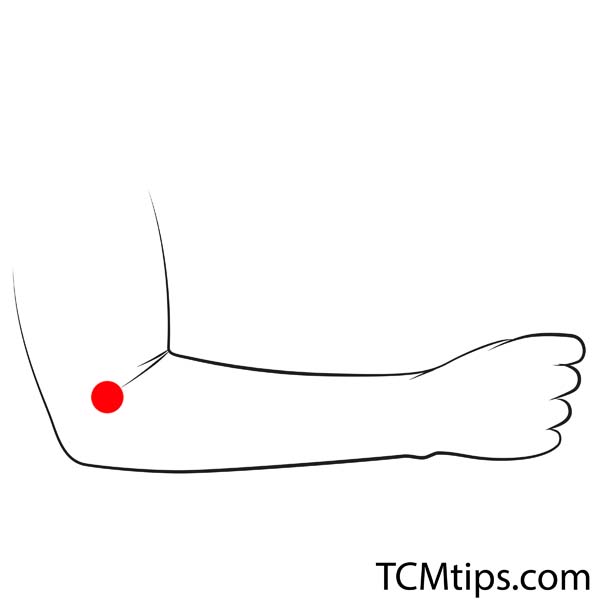
This acupressure point for arm fat loss has a number of benefits and is even considered to be one of a few effective acupressure points for hearing loss. This point is known for aiding in the regulation of blood flow, which can be a major factor in swelling and sagging arms. Over the course of a few treatments of this liver channel point, your arms should start to sag less and feel less stiff as they course with a healthy energy flow.
This point is located at the end of the outer crease of the elbow when the elbow is flexed. It is often said that you may experience slight discomfort while activating this point, and that is normal. It is often easiest to activate this point by applying firm pressure with your thumb while your pointer finger applies pressure to the otherside of the arm in a wide pinching motion, or the fingers can be positioned vise versa.
Acupoint: LI-13 (Other Names: Large Intestine-13/Shou Wu Li/Arm Five Miles)
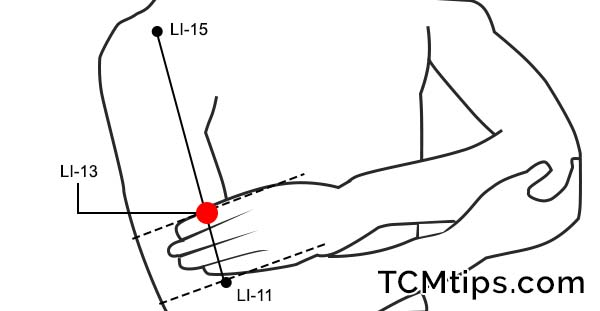
The large intestine channel has even more benefits for the upper arms, as displayed in the LI-13 point. Most commonly, this point is used as in combination with other acupressure points for numbness as it greatly reduces discomfort in the arms. However, it is being listed here due to its ability to enhance blood flow to the area and therefore reduce associated sagging arms and internal waste build-up.
To activate this point, hold one arm at a 90-degree angle in front of the body with your palm facing up; you can even hold the opposite elbow if it is comfortable. Then from the LI-11 point at the crease of your inner elbow, measure up the bicep 4 finger widths. Apply pressure at this point where the muscle meets bone to improve blood flow.
Acupoint: GB-21 (Other Names: Gallbladder-21/Jian Jing/Shoulder Well)
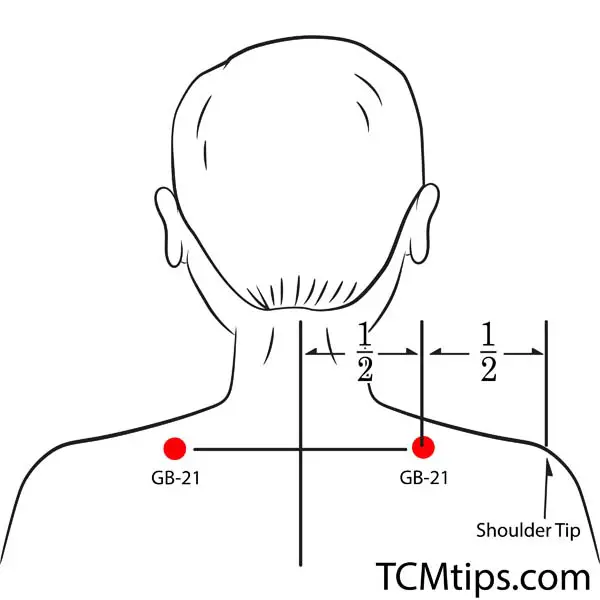
This powerful gallbladder point has effects on the body that are so potent it is listed as one of the main acupressure points to start labor. GB-21 also joins the triple energizer channel, which enhances its reach of effectiveness to include a reduction of discomfort in the arms, an increase in metabolism, and improved blood circulation. These factors can all contribute to improved arm fat loss.
This point is located on the back in mirrored locations in the muscle above the shoulder blades. The points fall perfectly between the spine and the start of each shoulder tip. It is recommended to apply physical pressure to this point with the middle finger and to gently rotate the shoulders while doing so.
Acupoint: HT-2 (Other Names: Heart-2/Qing Ling/Green Spirit)
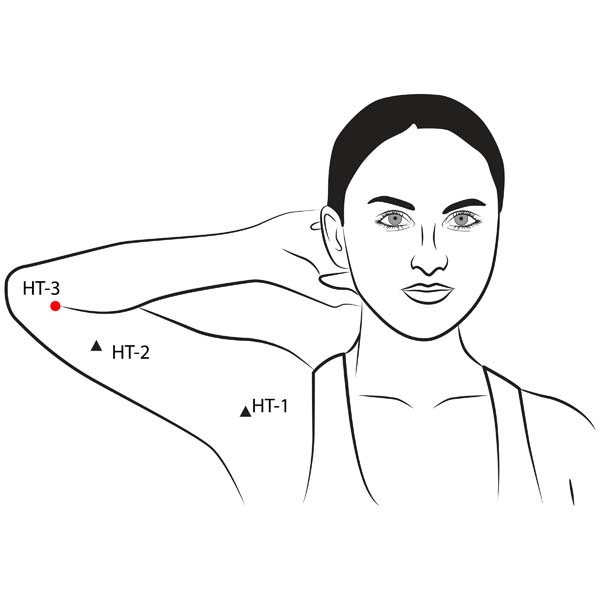
Removing waste products from the body is a key part of keeping it healthy. The HT-2 point is known as an acupressure point for shoulder and arm pain, but it also discharges waste from the area. In doing so, it helps the arms tone and strengthens the area to reduce flabby arms.
This point appears as the opposite LI-11 as it is at the end of the crease formed at the elbow but on the inside of your arm. Depending on how you activate each point, you may be able to activate them both at the same time.
Acupoint: EM-37 (Other Names: Bi Zhong)
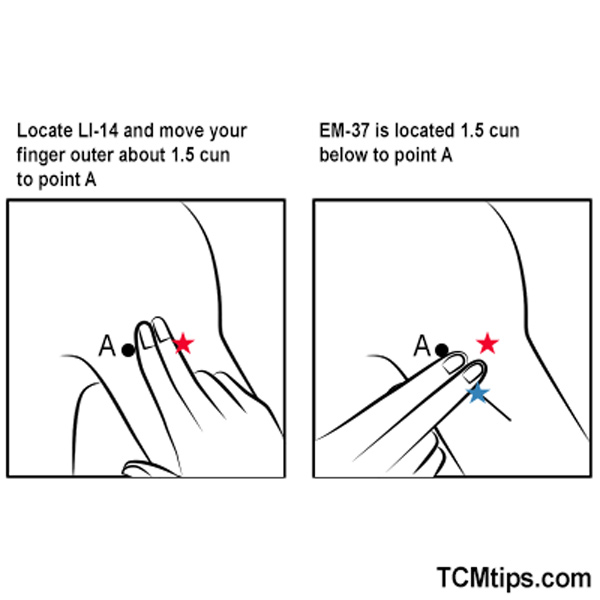
This simple point is another key area of activation for the reduction of waste build-up within the body, and more specifically, within the arms. This point is actually located on the upper arm and is a little-known effective acupressure point for flabby arms.
This point is located near the shoulder and is best located in relation to point LI-14. From LI-14 you will want to move two finger widths horizontally towards your inner arm. From that point, you will need to measure another two finger widths, but this time you will move them in a vertical direction down the length of your arm. When you apply pressure you may feel slight discomfort as that area is mostly bone between the two muscles of the upper arm.

Try our Anti-Aging Gua Sha Tool designed to bring out your skin’s natural glow.
Best Gua Sha Product- Anti-Aging: The tool is designed to target 11 specific aging signs such as wrinkles and sagging skin. By following the 7-step routine, users can improve skin firmness and reduce fine lines naturally.
- Enhances Skincare Routine: It works effectively with serums and lotions, boosting absorption and efficacy of skincare products.
- Visible Skin Improvement: Users can expect a smoother complexion, reduced puffiness, and a more youthful appearance.
 P. Sze
P. Sze 

